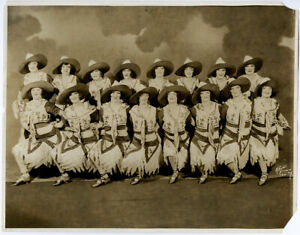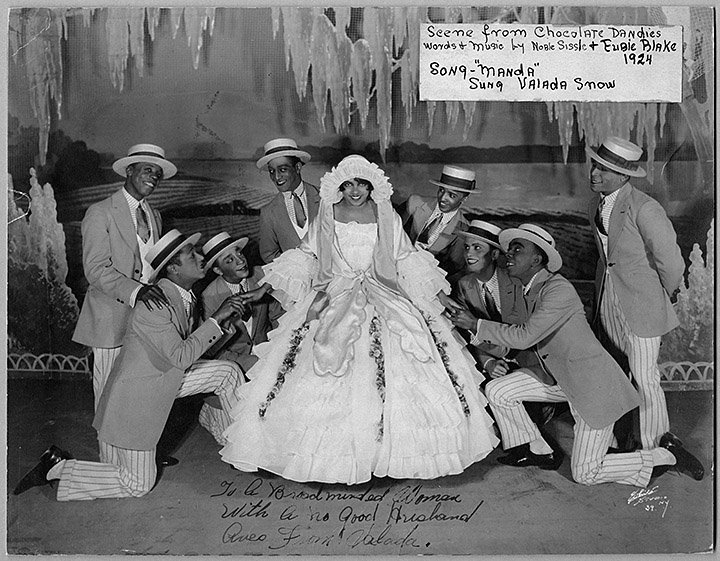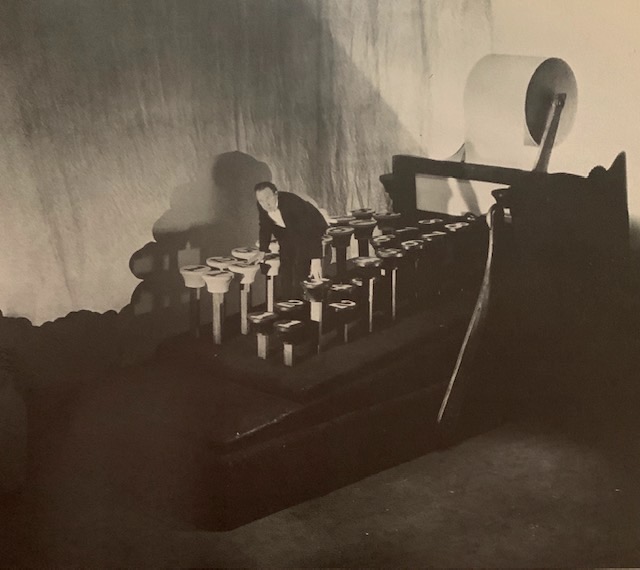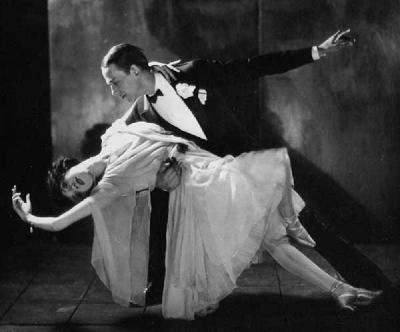
John E. Kellerd as Hamlet
By Samuel L. Leiter
A few weeks back, when I began this series, I said my intention was to provide in each installment a survey of a few significant shows for each year from the 1920s onward in the categories of plays, musicals, revues, and revivals, in that order. Today, coverage of 1920-1921 concludes with a discussion of that season’s revivals, specifically of two Shakespeare tragedies given multiple productions.
At the time, classical revivals—mainly of Shakespeare—often arrived in repertory seasons led by barnstorming actor-managers of varying degrees of fame and ability. Important stand-alone revivals with novel interpretations were relatively rare. During the 1920-1921 season, three such actor-managers—John E. Kellerd, Fritz Leiber, and Walter Hampden—brought their troupes to town, each doing a series of plays in which they played the lead as well as producing and directing.
There was also a tiny number of other, barely noticed, classical revivals by unimportant actors, one or two in Yiddish (notably, Rudolf Schildkraut as Shylock in The Merchant of Venice), and including a three-performance showcase of the Greek tragedy Iphigenia in Aulis, starring Margaret Anglin. Three plays of recent vintage were resuscitated by their original stars, Edward Sheldon’s 1913 Romance, with Doris Keane, J. Hartley Manners’s 1914 Peg O’My Heart, with Laurette Taylor, and Charles Rann Kennedy’s 1908 The Servant in the House, with Walter Hampden, as part of his otherwise traditional repertory.
The Shakespeare revivals of the actor-managers offered titles like Macbeth, Hamlet, Julius Caesar, Othello, The Taming of the Shrew, The Merchant of Venice, and so on, the same plays, by and large, appearing in each repertory. What follows here looks only at two such plays, Macbeth and Hamlet.
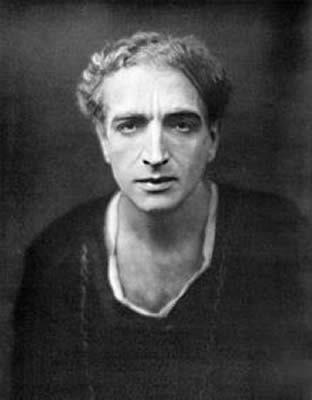 Fritz Leiber as Macbeth
Fritz Leiber as Macbeth
The most important of the four Macbeths was not, however, given by any of the actor-managers, but was, instead, an independent version starring Lionel Barrymore. But first came the production of John E. Kellerd, an English-born thespian, who, in addition to once having played leading roles opposite Polish star Helena Modjeska, gained fame for breaking Edwin Booth’s 100-performance run of Hamlet with a 102-performance run in 1912-1913. Kellerd gave four showings of Macbeth during his season at the Manhattan Opera House, opening on December 9. His other offerings, none of them reviewed, included Hamlet, The Merchant of Venice, Othello, and Julius Caesar.
The other pre-Barrymore Macbeth was in the hands of Fritz Leiber, who offered five performances of it at the Lexington Theatre, opening on December 26. Leiber’s repertory, which showed up right after Kellerd’s, included Hamlet, The Merchant of Venice, Julius Caesar, Romeo and Juliet, Richard III, and Othello. Reviews for most appear as unavailable. Leiber and company would return on several occasions during the decade.
Barrymore’s attempt, produced and staged by leading director Arthur Hopkins, premiered at the Apollo Theatre on February 17, 1921, but failed to come anywhere near the success of his brother John’s Shakespeare revivals, especially Hamlet. After 28 performances, it was history. Despite its awful reception, this flop production continues to be cited, not for Barrymore’s acting but because of the fantastical designs created by the great Robert Edmond Jones.
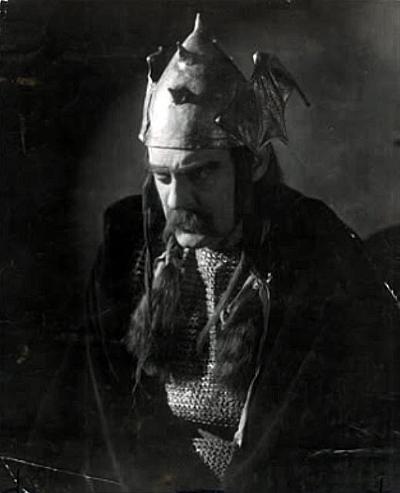
Lionel Barrymore as Macbeth
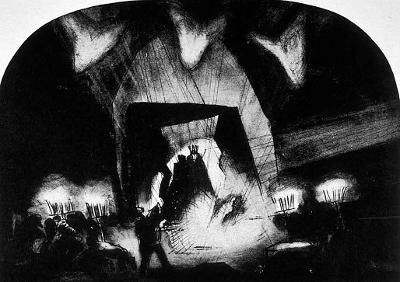
Macbeth Design by Robert Edmond Jones
Barrymore, ultimately one of Hollywood’s leading character actors, couldn’t pass muster in his only Shakespearean role. As he later reported in We Barrymores, “I do not mind telling you that I was no good in Macbeth.” There’s a famous quip by critic Heywood Broun regarding this revival. Referring to the McBride ticket agency, he wrote, “Lay on MacDuff, Lay off McBride.”
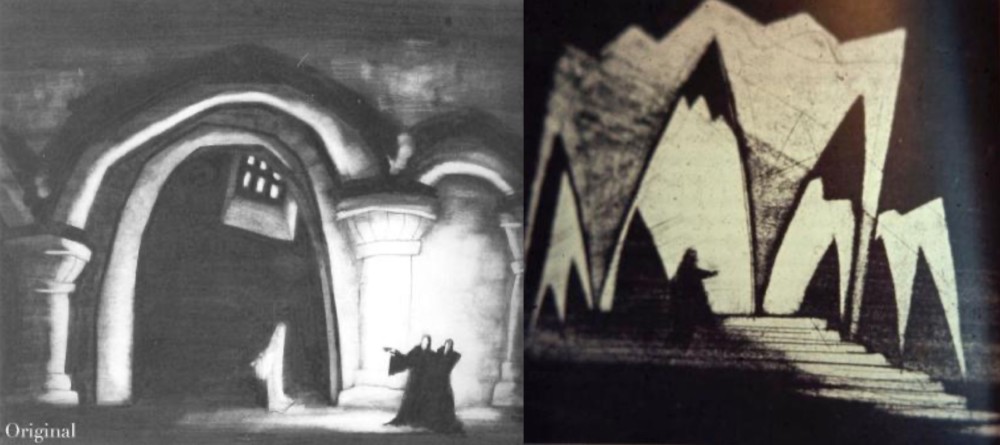
Macbeth Designs by Robert Edmond Jones
Jones’s striking visuals produced much controversy. Discussing the Inverness setting, critic Alexander Woollcott said they resembled “a giant molar tooth pitched rakishly in space.” Of the heath scene, he said, “The curtain rises on a black curtained stage of infinite depth and height. Glaring down on the centre are three five foot masks of dull silver. The eyes of these masks focus on a ring around which stand three interminable figures in crimson crepe. These hags . . . wear masks of bronze. . . . Startling? . . . Yes. But of the scene’s own atmosphere . . . not an atom.” One of the few who recognized the significance of the sets was theatre scholar Kenneth McGowan, who called them “epoch making.”
Although none of the critics had anything nice to say of Barrymore’s acting, his Lady Macbeth, Julia Arthur, was mildly approved. As for Barrymore, Ludwig Lewisohn said he acted the part “as a creature of no tragic austerity, no vision of fatality, no splendor, and no gloom. He is rough, sordid, unintelligent, ignoble.” Walter Prichard Eaton commented that the production offered “the worst acting in a so-called first-class Shakespeare production” he had seen in years.
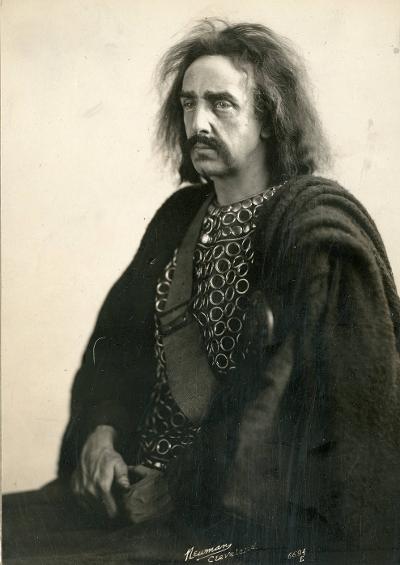
Walter Hampden as Macbeth
The season’s last Macbeth arrived in the company of Walter Hampden, who did it, with sets by another estimable designer, Claude Bragdon, at the Broadhurst Theatre, from April 19, 1921, for six showings. This disappointing version inspired Woollcott to snap that not “a single scene [was] played with real tragic power or beauty or distinction.” Hampden was deemed a thorough and conscientious player of intelligence but little inspiration. Mary Hall was a weak Lady Macbeth, not even as good as Julia Arthur’s. One of the few touches of originality included having Lady Macbeth faint after the banquet rather than trudging wearily off to bed. The highlight was the convincingly vigorous final battle between MacDuff and Macbeth.
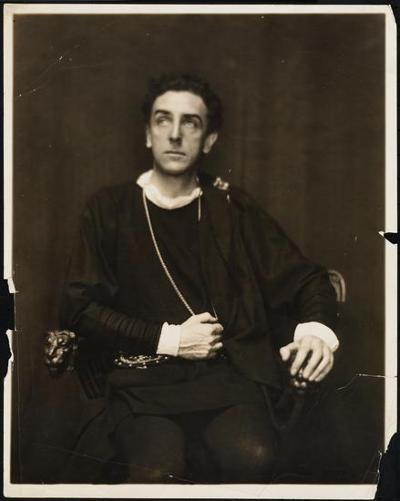
Walter Hampden as Hamlet
Hampden’s schedule also offered him in Hamlet on May 4, for eight performances; The Taming of the Shrew on May 11, for four; and The Merchant of Venice on May 13, for seven. He also presented, as noted, a revival of his old hit, The Servant in the House.
Moving on to Hamlet, we can skip Kellerd’s version, which was ignored by the press. They paid more attention to Leiber’s, which opened at the Lexington on December 27, for three nights. Leiber would reappear regularly with Hamlet in tow during the decade.
On the present occasion, the Times wrote: “He knows his Hamlet and physical and in characterization fits the popular Hamlet. His figure, lean and trim, and his poetic masque are well suited to the part, and while he fails to carry one to the heights of tenseness contained in the action, he still keeps one’s attention concentrated on the wistful, melancholy brooding which dominates the Prince of Denmark,” Virginia Bronson, Leiber’s wife, was Ophelia, and John C. Hickey was Polonius in an otherwise dull company.
The other 1920-1921 Hamlet of note was Hampden’s, which he had introduced locally several years before, and would return with again, with different casts, in the years to come, including a 1925 mounting with Ethel Barrymore as Ophelia.
Hampden’s Hamlet was three and three-quarters hours long and felt it. A little-cut text allowed the Times to appreciate “the sheer dramatic greatness of this play.” Hampden’s meticulous, clearly worked-out production left nothing vague or overlooked. The note struck by his acting was of the heroic.
Many were bored, but Richard Dana Skinner described this noble Dane as a straightforward, triumphant being who never wavered from his course of avenging his father’s death. Once he was convinced of the truthfulness of the ghost’s tale, he moved without any indecision toward the inevitable conclusion.
And so also concludes our look at highlights from New York’s 1920-1921 theatre season. When we return, we will poke the embers of history for whatever still glows from 1921-1922.




